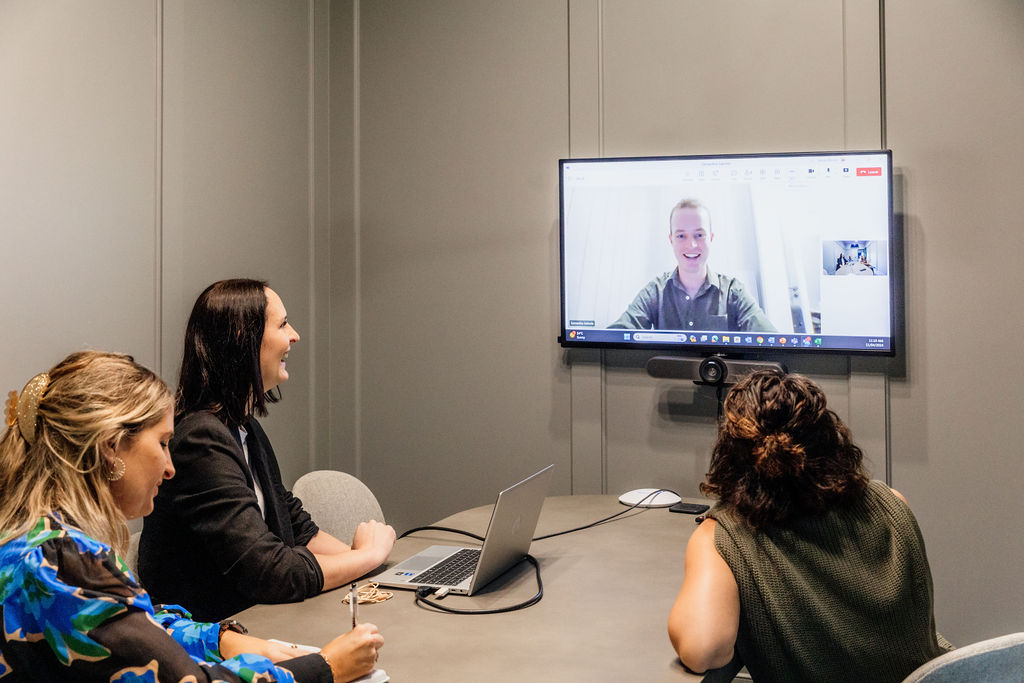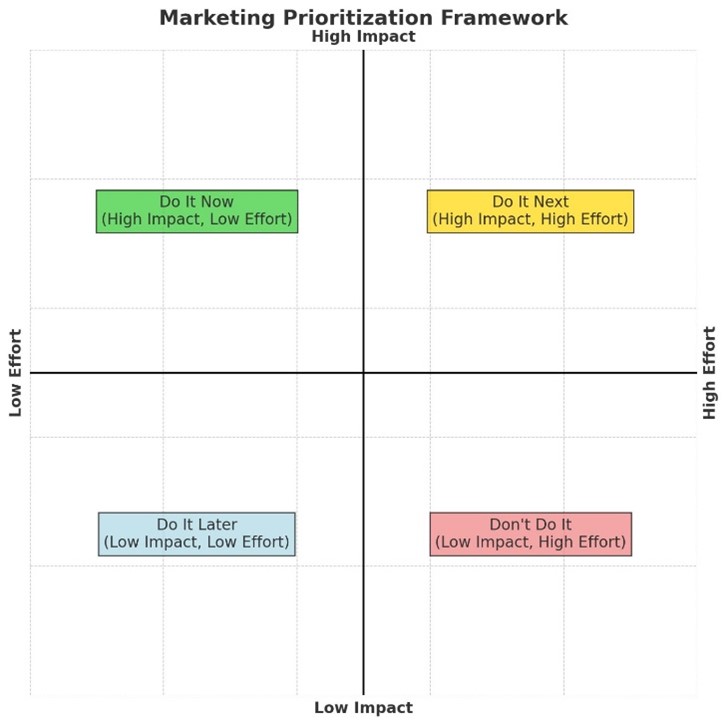
Insource v Outsource
When should you look for a partner to help with your marketing?
A content marketing agency telling you when not to outsource? This article is not a farce, but a pointed reminder that not all jobs should be delegated – and we’ll explain why.
If you’re looking to claw time back into your week, there’s often better ways to do it than an outsourced agency solution.
A bit like ordering ramen rather than sushi UberEats, not all tasks travel to an external partner the same – or should be ordered in the first place.
Having taken briefs of all sizes, budgets and styles over the last eight years, we thought we’d lift the lid on the best tasks to send to an agency partner, and what should stay safely cocooned for internal management.
But before we dive in, I need you to think about your marketing time and effort first.
No two jobs are the same, or the same use of your time – and knowing the difference is key to answering the insource v outsource question.
When in doubt, plot your current to-do list or marketing plan against this XY axis to see where the tasks sit.

Image: Marketing Millennials
What you’re looking for are the tasks that keep you in the highest and best use of your time (those things in the top left column).
Often the things that are best outsourced are the ones that never make it off your to-do list and sit in the top right of the graph. They’re mighty powerful marketing tasks, but are going to take a good whack of time that you don’t have to complete.
However, to only look at this graph would oversimplify the question – so there’s a few more things to consider.
Think about how much time realistically you have each week to complete tasks.
While the average full time employee might have 38 hours in a working week, I’d hazard a guess, for most of us, more than half of the working week is not all productive time.
Once we take out team meetings, sales tasks, admin tasks and general email back and forth, if you’re like me, you’re down to 20 or so hours (if you’re lucky) of productive time – and that’s if none of those meetings had any follow ups or accountability out of them.
So really, we’re talking maximum 15 hours of productive time for doing the ‘doing’ on your marketing plan. RIP your to-do list.
Crunch time: What stays in your list, what goes?
I know you can do all of the things in the list, but the reality is you don’t have time.
Outsourcing is rarely a question of skills or competency (everyone knows you can do the job), but a question of what can be done in the hours available to you.
Agencies sell skills, but they’re much better at selling (read: freeing up) your time.
If you’ve only got 15 measly hours to do what you need to do – ask – what’s going to drive the biggest and best impact for your business?
So, what tasks outsource well?
Not all tasks are ideal for external execution, but the ones that travel best to an external agency are those that you’re likely not going to get around to doing (like finding eight hours to write a blog, or re-design that eNews template, or compile a comprehensive quarterly comparison report for senior management).
Shedding light on the last eight years of running an agency, these are some of the tasks and reasons that outsourcing has worked better then insourcing for our clients.
Omni Channel Campaigns – when you’re trying to take something to market that’s combining words, images, videos and multiple placements, and you’ve only got 15 hours to deliver it … think again. Outsource to maximise the broad skills available in an agency setting, while retaining the parts of the campaign you love and enjoy – like strategy and seeing it in market.
Social Media Management – time consuming at best, and a total distraction at the worst. Many businesses choose to outsource their management to make the time blow outs someone else’s problem. It’s easily outsourced but beware these pitfalls of external social media management to consider when sending externally.
Paid Social – if there’s a skills gap around paid social media internally, don’t faff around trying to close it while spending good money on ad spend. It pays to have an expert handle the paid social media, when you’re putting big dollars on the line. Invest in an external agency who can manage the paid ads and ensure you get the all-important ROI.
Blogs, copywriting, collateral – Got something that combines words and graphic design? There’s an outsourced solution to get that out the door and into print or the hands of the consumer fast. These tasks in our experience generally kick around to-do lists for too long, and do your SEO juice a disservice when left on a list rather than driving leads.
What tasks should you retain?
I’m always an advocate that you should retain the stuff you enjoy the most. No agency wants to take the work you love doing – and no one internally wants to see their passion projects executed by someone else. It just makes sense.
If there is something you want to do, advocate for it to be in-sourced – however be clear with stakeholders and management that you’ll only have 15 hours to work on it.
So, if your passion is branding, which could be an 80 hour exercise, if you’re lucky, it’s going to take you more than five weeks to push through, full time, so long as no one gives you any more work to do.
If you have internal skills like graphic design, and a clear look and feel you’re chasing, these sorts of tasks work well insourced too. An outsourced solution will do it differently to you, and that’s the point. You can’t be disappointed when they give you something different to what you would have produced internally.
Looking back at the past eight years, I’ve seen that these tasks are often better insourced.
Short-term projects requiring lots of onboarding – everyone knows the first part of any engagement is going to take more time than when you know the business or brand back to front, so if your project has an end date and no foreseeable future, you might find it takes longer to brief the agency than do the work.
Crisis communication – you know your business and stakeholders better than most, and can put a message into market fast. If there’s a natural disaster or message to share urgently with your community, you don’t always want to go via an external party first. Where outsourcing becomes powerful in a crisis is when your people are fatigued from the crisis or not equipped for savvy media who might be causing reputational damage.
Internal communications – if it’s for your people, it really should be written by your people. Developing an organisation’s tone, cadence and conversation style is something handled by the people who know it best.
Where does that leave your marketing plans for this year?
Whether you in source or outsource, there’s no right or wrong way to approach the task. Take into account these important considerations before engaging any agency:
- What do you want to retain?
- What do you enjoy most?
- What’s the highest and best use of your time?
- What is it that only you can do, not an agency?
- Be realistic, what’s never made it off your to do list? Allocate those things (if they are valuable to the business to do so).
- Is it even marketing that you need help with, or something an administrator could assist with?
If you’ve landed at outsourcing as the model, you know what to do next!
Our Content Crew would love to help – hello@mediamortar.com.au
